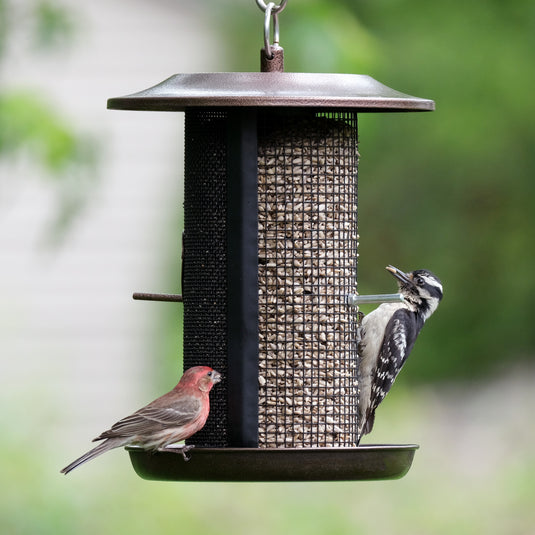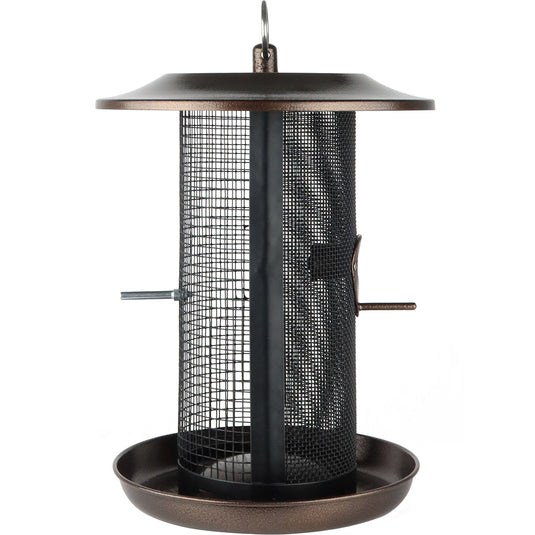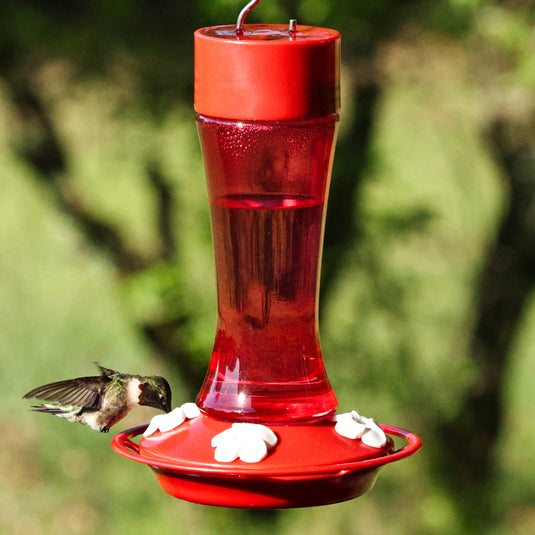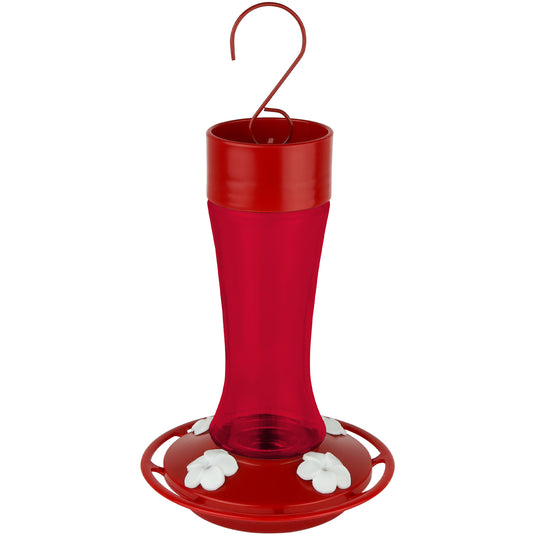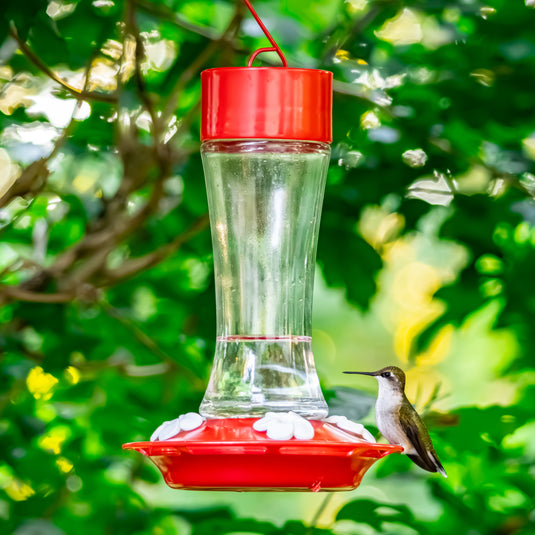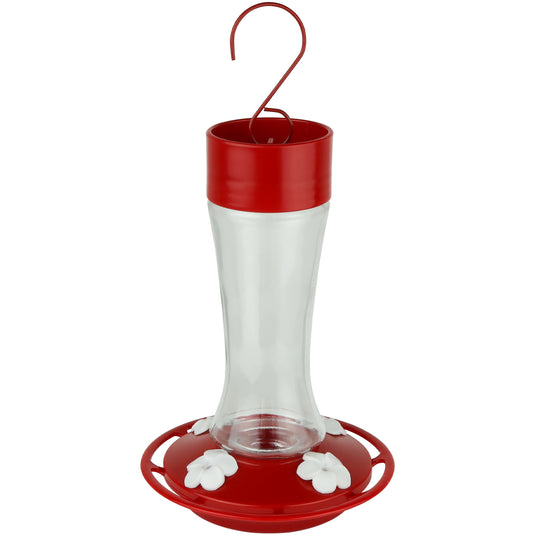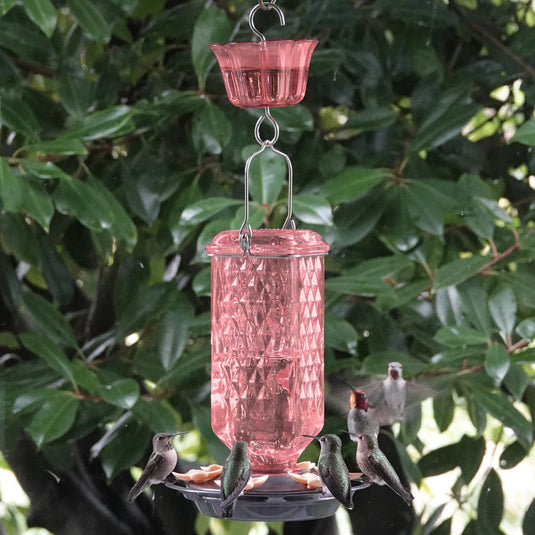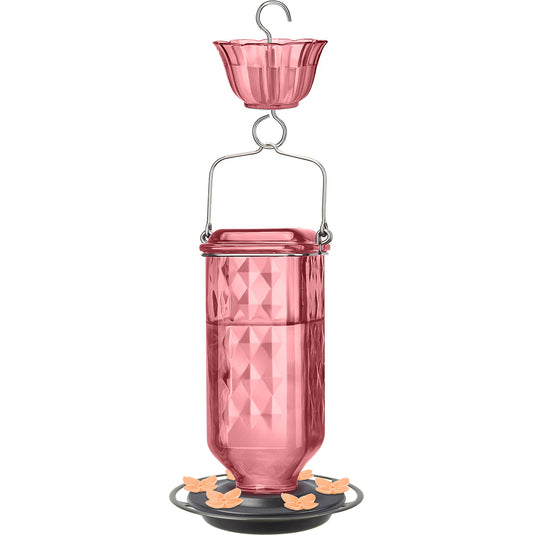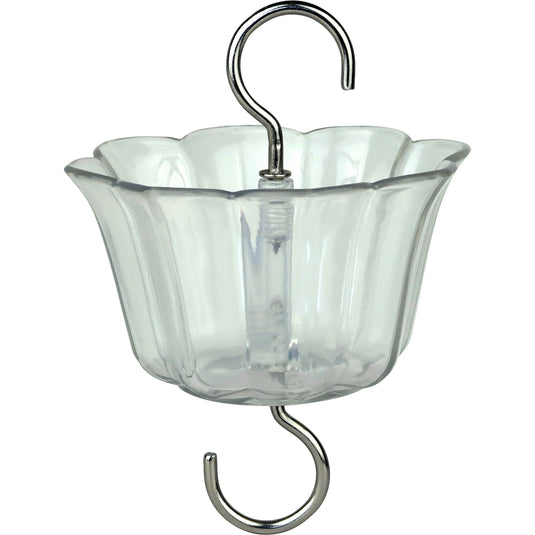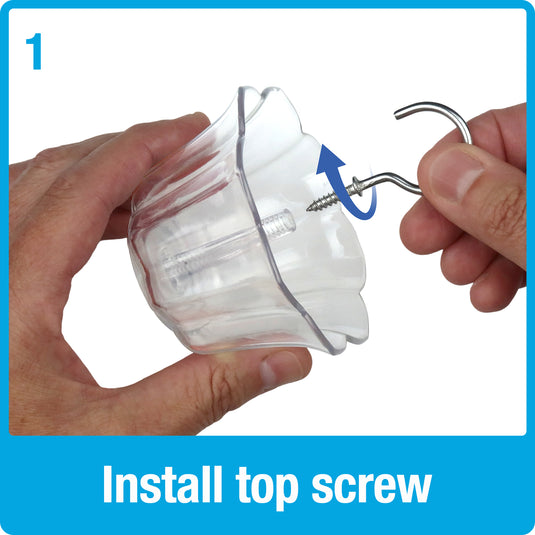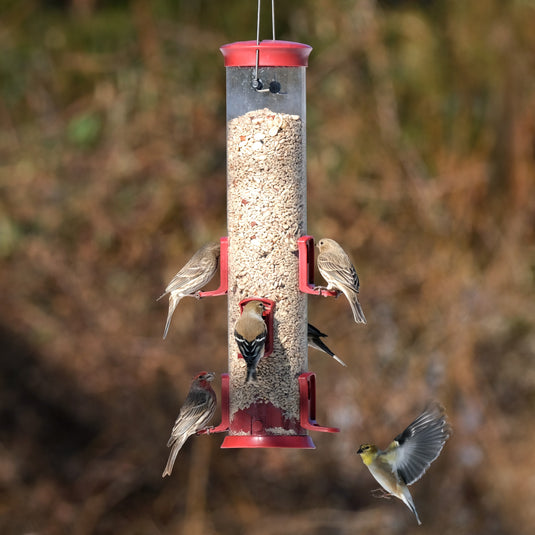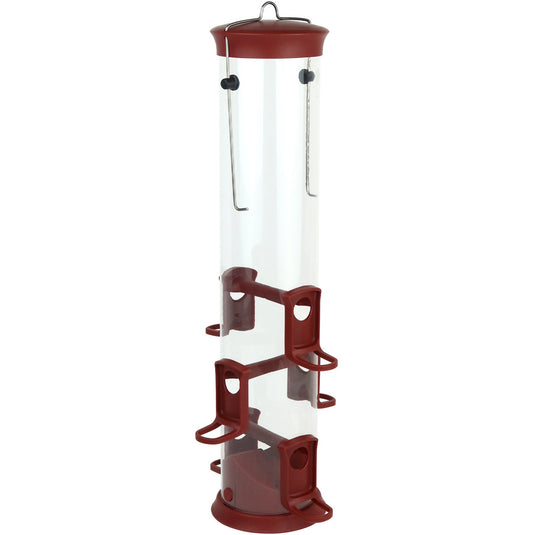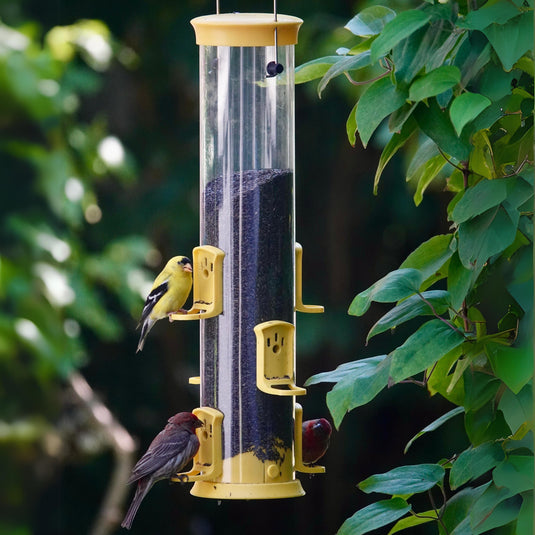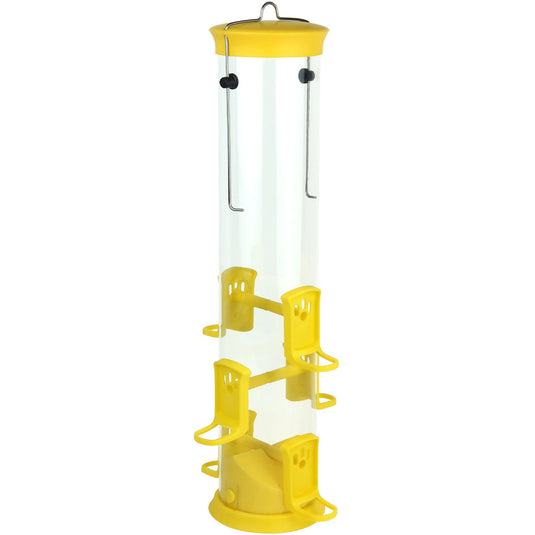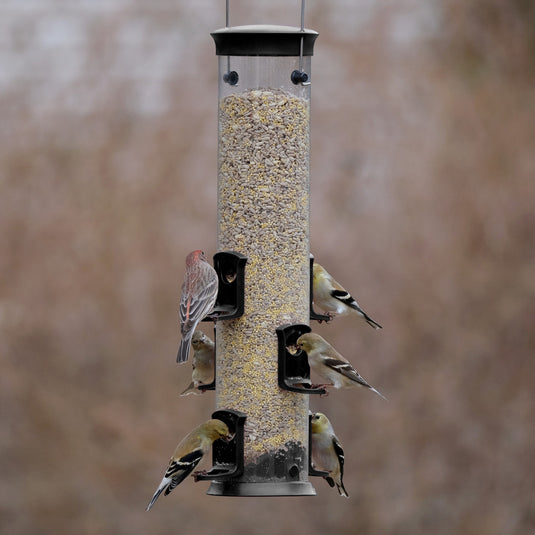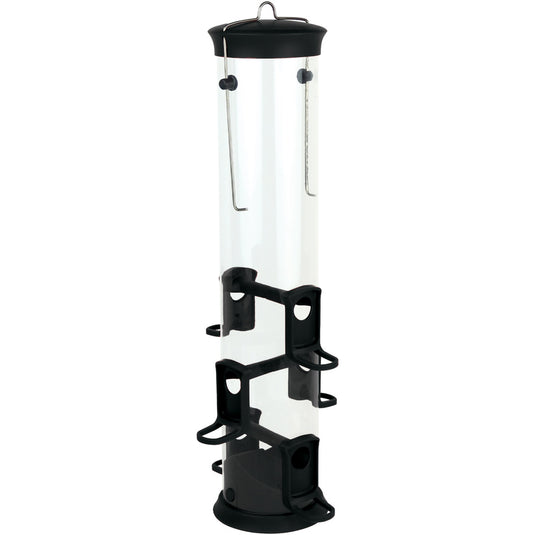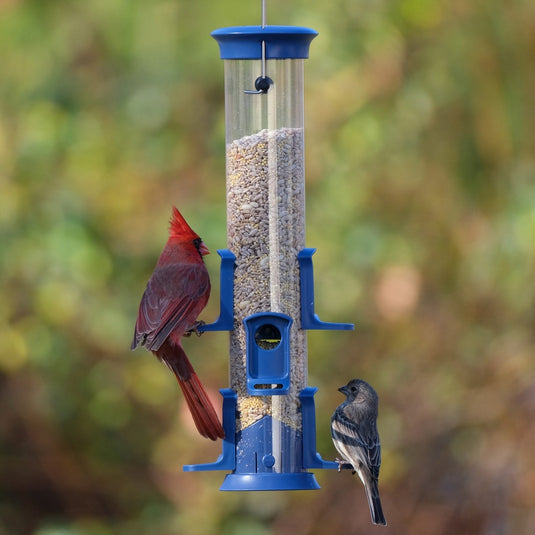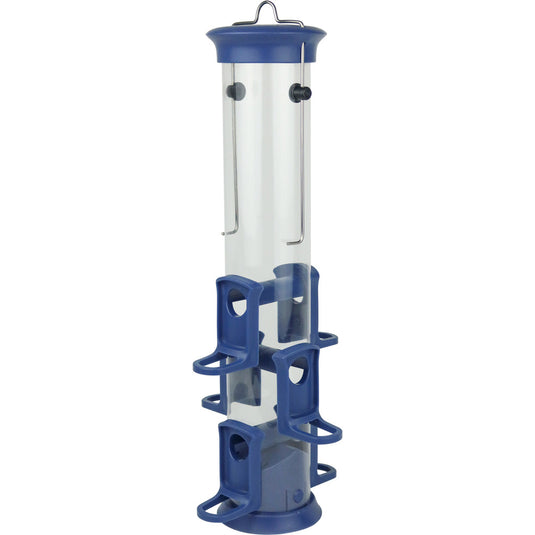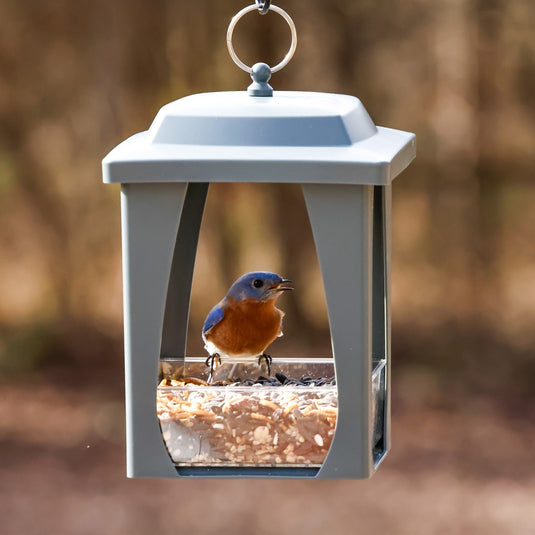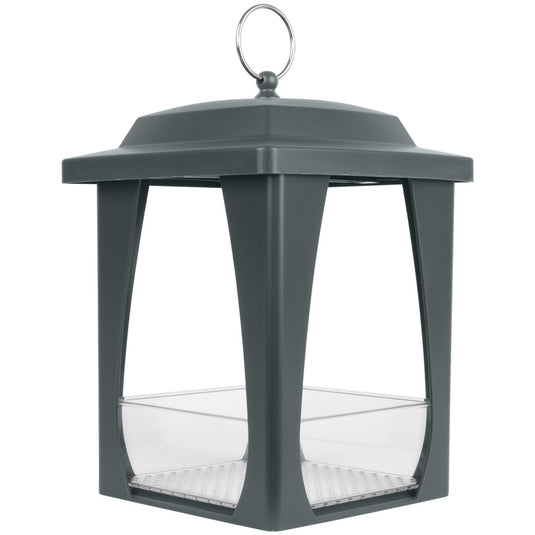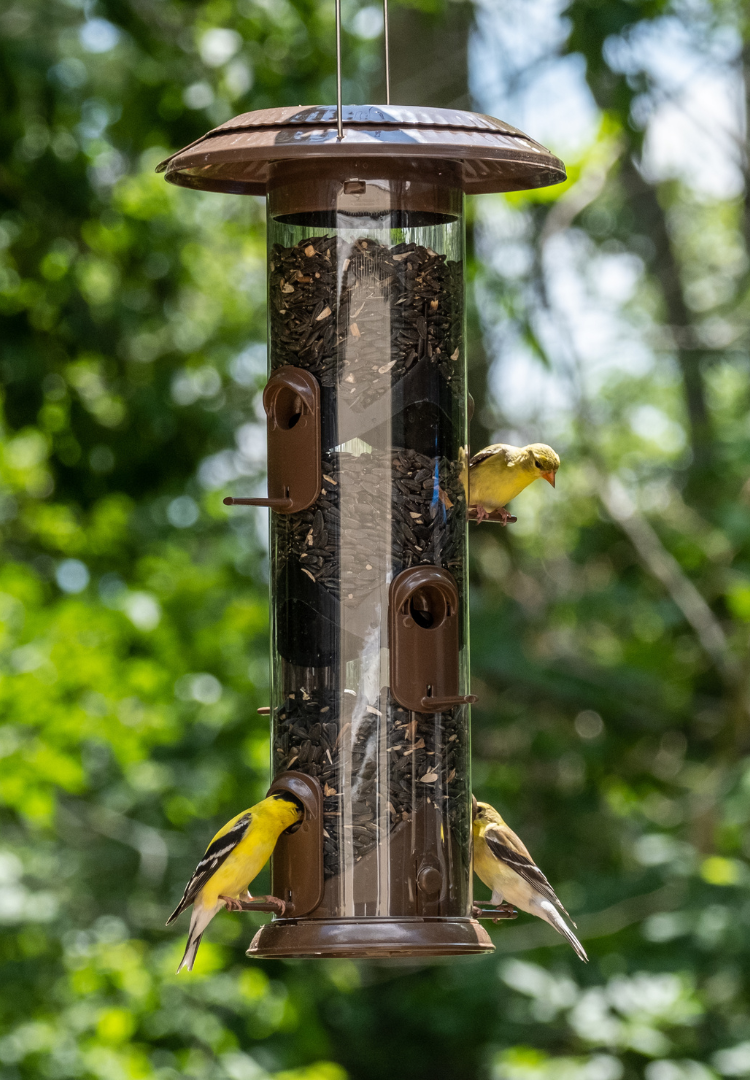Identifying Rufous Hummingbirds:
These small hummingbirds are roughly 2.8-3.5 inches in length and have fairly straight bills and short wings that don't reach the end of the tapered tail when perched. Male Rufous hummingbirds are fiery orange in good light with a bright iridescent red throat. Females are green on their backs with rust colored feathers on their flanks, tail, and often a small patch of orange on the throat as well. Both male and female Rufous hummingbirds are aggressive and can typically be found performing aerial launches to chase off any other hummingbirds that appear, even in areas where they're spending only a short amount of time passing through for migration.


Left: male. Right: female.
Similar Species:
Both Allen's hummingbirds and Rufous hummingbirds share many of the same physical characteristics and can be extremely hard to distinguish in the field, even by experienced birders. The only true way to decipher between these species is by subtle differences in the shape of their tail feathers. In the Allen's hummingbirds, all tail feathers are narrower than their Rufous counterpart. The Rufous hummingbird has a subtle but distinct notch at the top of the R2 feather (second from center).

Where Rufous Hummingbirds Live:
During summer breeding season this particular species of hummingbird resides mainly in the Pacific Northwest into the Southwestern strip of Canada in open or shrubby areas of forest openings, yards, and parks, and can also sometimes be found in thickets, swamps, and meadows ranging from sea level to about 6,000 feet. When in their wintering grounds in Mexico, these hummingbirds are found between 7,500 to 10,000 feet elevation in shrubby areas and thorn forests. These birds can also often be found in the Southwestern portion of the United States on their migratory path to Mexico although only for a short period of time while passing through.
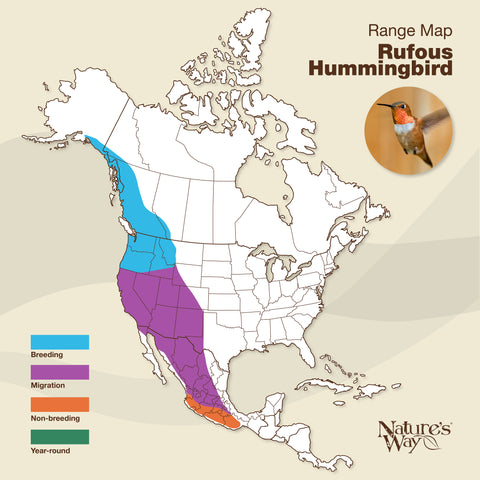
What Hummingbirds Eat:
Rufous hummingbirds feed on nectar from tubular flowers and insects which they catch during flight or may even pull from spider webs or plants. Hummingbirds will also readily consume artificial nectar from hummingbird feeders. Nectar can be made using a ratio of 1 cup white sugar to 4 cups water. The use of dye or food coloring in artificial nectar is not necessary for attracting hummingbirds to a feeder and is not recommended due to the sensitive nature of these tiny birds.
How to Attract Rufous Hummingbirds to Your Feeder:
Placing feeders near flower beds or planters may help attract more
hummingbirds to your feeder. For the best chance of hummingbirds discovering your feeder, it is recommended to have it up and ready before they return from their winter migration. Be sure to research the migratory pattern of hummingbirds in your area to make sure you haven’t put your feeder out too late, since this can cause them to overlook it later in the season. Feeders with built in perches can help these tiny birds conserve energy and feel more comfortable feeding, prolonging feeding times and increasing hummingbird viewing.
Nesting:
Wasting no time, female Rufous hummingbirds begin constructing their nests within 3 days of arriving at the breeding grounds. Nests are typically located in large deciduous or coniferous trees roughly 30 feet in the air. Roughly the size of a large thimble (1 inch deep and 2 inches wide), the female builds the nest out of soft down held together with strands of spider silk and sometimes pine resin and camouflages the exterior of the nest with lichen or moss.
A typical clutch size is typically 2-3 eggs that are roughly 0.3 inches wide and 0.5 inches in length. The tiny eggs are white and weigh less than half a gram. Eggs hatch in 15 to 17 days and will fledge the nest after an additional 15 to 19 days.
Related Articles:
Are you ready for hummingbird season?


